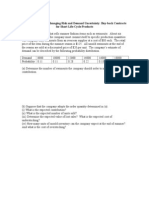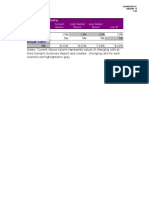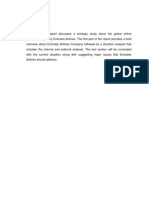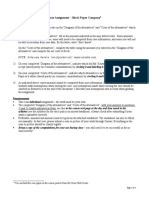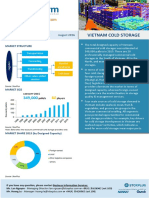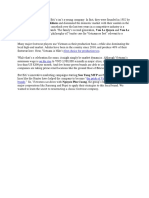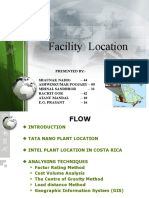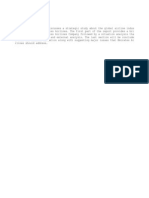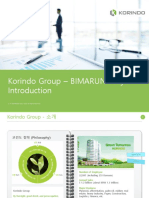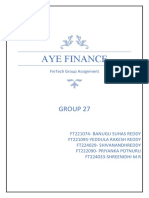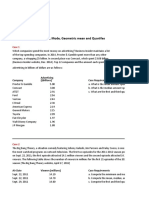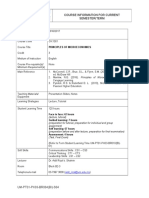Table of Contents
EXECUTIVE SUMMARY...........................................................................................................................21. EXTERNAL ANALYSIS OF AIRBUS...................................................................................................2
1.1 A
CRITICAL
ANALYSIS
OF
A
IRBUS
EXTERNAL
MACRO
CONTEXT
USING
PESTLE........................................2
1.1.1 Political & legal context..............................................................................................................................21.1.2 Economic Context..........................................................................................................................................31.1.3 Social context..................................................................................................................................................31.1.4 Techonological Context..............................................................................................................................4
1.2 I
NNOVATION
CHALLENGES
FACING
A
IRBUS
........................................................................................................51.3 P
ORTER
´
S
F
IVE
F
ORCES
APPLIED
IN
A
IRBUS
......................................................................................................5
1.3.1 Competitive rivalry (low)...........................................................................................................................61.3.2 Bargaining power of suppliers (low)....................................................................................................61.3.3 Bargaining power of customers (low)..................................................................................................7 1.3.4 Threat of new entrants (low)...................................................................................................................7 1.3.5 Threat of substitute products or services (low)...............................................................................7
2. INTERNAL ANALYSIS OF AIRBUS....................................................................................................8
2.1 T
HE
RESOURCE
-
BASED
VIEW
(RBV)...................................................................................................................8
2.1.1 Human:..............................................................................................................................................................8 2.1.2 Tangible.............................................................................................................................................................9 2.1.3 Intangible..........................................................................................................................................................9
2.2 A
IRBUS
CORE
CAPABILITIES
.............................................................................................................................102.3 M
ISSION
AND
OBJECTIVES
...................................................................................................................................102.4 C
URRENT
I
NNOVATION
........................................................................................................................................10
3. UNDERSTANDING THE CURRENT INNOVATION STRATEGY...............................................124. STRATEGIC RECOMMENDATIONS...............................................................................................135. CONCLUSION......................................................................................................................................13
Execuve Summary
Recently, Innovation becomes considerable relavant for the strategies to gaincompetitive advantage for organizations. Firms usully use this element to enhancecustomer experience and fulill their levels of satisfaction. This report attempts tocritically analyse all the main characteristices about Airbus case study. Firstly, trought a Porter Five Forces Analysis, this study wil portrays the macro environmental factorsthat may impact this organization and how this company has face these challenges.Hence, it likely determines whether or not this company have address innovationbased on the external forces. Moreover, the internal factors that can have an effect on Airbus, ie, resources such asinancial, human or intangibles are analyzed. Additionally, it will emphasize thecompetitive advantage the company has in the market and what is the success of being the airline is selling more planes in the world in today's reality.Finally, after exposing all external and internal elements and understand which is thestrategy that is handling Airbus some recommendations to further enhance theirpotential and remain a leader in the sector is currently made. It should be noted howthis company has excelled in recent years for its innovation and as increasingly moreprojects have focused on reducing costs and offering the greatest pleasure topassengers.
1. External analysis of Airbus
1.1 A crical analysis of Airbus external macro context using PESTLE
1.1.1 Polical & legal context
a.There is a one important agreement signed bewteen The United States of America and Eurepean Union about the free sky in these two spaces. The EU-US Air Transport Agreement was applied in 30 March 2008 for all EU Member
States. It was amended by a Protocol signed and provisionally applied on 24
June 2010. Norway and Iceland accession to the Air Transport Agreement asamended by the Protocol is provisionally applied from 21 June 2011. (Comm,2009)b.Every country in the world has the autonomy to decide the air regulations andtaxes t hat apply according to their laws and legislation.
c.The Airbus-Boeing conlict has followed a familiar path of trade disagreementsbetween the EU and US, with each side symmetrically accusing its opponent of breaking the rules. (ÇaliŞkan, 2010) d.It is important to mention that the security and the terrorist attacks affect thepolitical situation of each country or state. Puedes dar un ejemplo aca.
1.1.2 Economic Context
a.There are some countries such as China, Spain, or France o in economicrecession due to political or social issues. In those market s the demand for
aircrafts can be signiicant reduced as the result of
b.The exchange rate affects the production and sale lows of Airbus, resulting incompanies with overseas branches, or those that trade internationally, to be at the mercy of global currency luctuations. As is the case with privateinvestments, changes in conversion rates can wipe out proits or increasegains. When a irm has shareholders to report to, and the igures can run intomillions, then it can have a serious impact on proits and losses. The rapidlychanging currency landscape can have the potential to make businessesreluctant to set irm igures in contracts months before a deal takes place.(Euroinvestor, 2012).Likewise, t hese kinds of problems are present in the agreements with global
customers. Despite the fact that something may appear like a great arrangement when it is irst composed down, it can become detrimental for theparties once it has been signed.
c.A sharply increased the annual percentage increase of the cost of living asmeasured by the consumer price index. Consumer price indices are based on arepresentative basket of goods and services purchased by consumers in aneconomy. (Callahan, 1981), over the countries where Airbus is manufacturingand assembling for producing the aircrafts.
1.1.3 Social context
a.Airbus forecasts that China will need over 5,300 new passenger aircraft andfreighters from 2014 to 2033, with a total market value of US$ 820 billion. It represents 17 per cent of the world total demand for over 31,000 new aircraft in the next 20 years. (Airbus , 2014)b.The lifestyle in the society affects aircraft demand. In some countries there aremore people travelling by plain nowadays. The International Air Transport Association (IATA) reported that global passenger trafic results for 2015
showing demand (revenue passenger kilometers or RPKs) rose 6.5% for thefull year compared to 2014. This was the strongest result since the post-GlobalFinancial Crisis rebound in 2010 and well above the 10-year average annualgrowth rate of 5.5%. (IATA, 2016)Real increased of demand by region:Table 1. Real increased of demand by region
1.Asia Paciic carriers recorded a demand increase of 8.2% compared to 2014,which was the largest increase among the three largest regions. Demand wasstimulated by a 7.3% increase in the number of direct airport connections in theregion, resulting in time-savings for travelers. Capacity rose 6.4%, pushing upload factor 1.3 percentage points to 78.2%. 2.European carriers’ international trafic climbed 5.0% in 2015. Capacity rose3.8% and load factor increased 1.0 percentage point to 82.6%, highest amongthe regions. The healthy result in part was attributable to a pick-up in consumer spending in the Eurozone as well as a moderate increase in light frequencies.Trafic growth slowed toward the end of the year owing to strikes at Lufthansaand the shutdown of Russia’s Transaero.3.North American airlines saw demand rise 3.2% in 2015, broadly unchanged from the growth achieved in 2014. Capacity rose 3.1%, edging up load factor 0.1 percentage points to 81.8%.4.Middle East carriers had the strongest annual trafic growth at 10.5%. As aresult, the share of international trafic carried by Middle East airlines reached 14.2%, surpassing their North American counterparts (13.4%). Capacity growthof 13.2% exceeded the demand gains, pushing down load factor 1.7 percentage points to 76.4%.5.Latin American airlines’ trafic rose 9.3% in 2015. Capacity rose 9.2% and load factor inched up 0.1 percentage points to 80.1%. While key regional economies, particularly Brazil, have been struggling, overall trafic has been robust.6.African airlines had the slowest annual demand growth, up 3.0%, although thiswas a signiicant improvement over the 0.9% annual growth achieved in 2014.With capacity up just half as much as trafic, load factor climbed 1 percentage point to 68.5%. International trafic rose strongly in the second half of 2015, inconjunction with a jump in trade activity to and from the region. (IATA, 2016)
1.1.4 Techonological Context
a. The company’s pioneering application of composite materials was followed by theirmainstream acceptance into worldwide aviation manufacturing. Airbus also hascontinued to improve aircraft light decks, using the latest technological development






